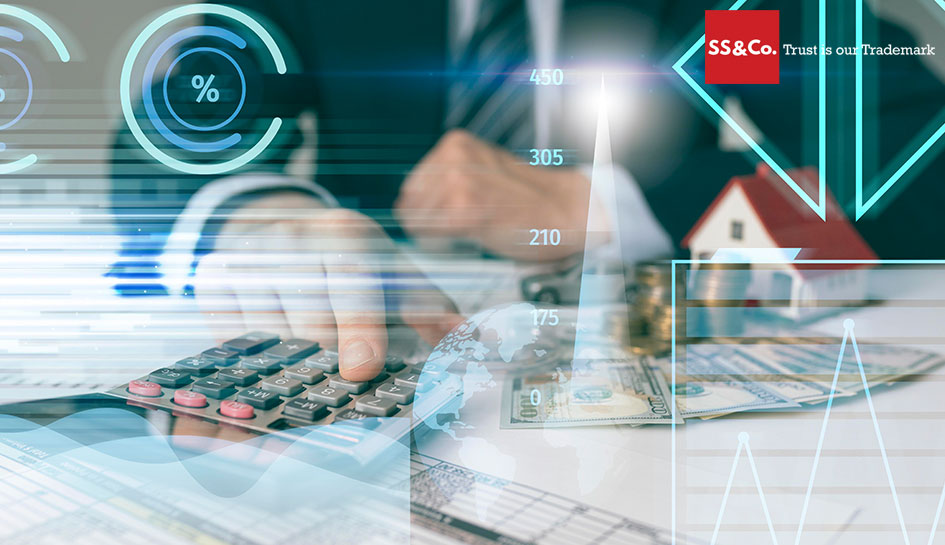Fixed Asset Management Process

In the business world, assets hold a huge value as they play a pivotal role in generating value, mitigating expenses, and rewarding future outcomes. These assets can be office equipment, real estate, or vehicles, which must be protected to extend their life span, minimize the cost, and ensure compliance with regulations. This is where fixed asset management plays its role; it assists businesses in observing, documenting, preserving, and even maximizing physical assets throughout their lifecycle from acquisition to disposal. This organized approach is crucial to utilize them effectively, prevent them from any misuse, and report them exactly in the financial statements. In progressive countries like KSA, it also includes compliance with regulations like accounting standards and tax legislation, as well as global practices. We will further thoroughly explain fixed asset management, its complete process, objective, and why it matters for Saudi Businesses.
Introduction to Fixed Asset Management
Fixed Asset management is a methodical procedure to record, track, organize, and maintain a company’s fixed assets for maximum utilization and clear financial representation. The goal behind this is to maintain a transparent, sustainable, and proficient asset management system that aids businesses in adhering to accounting standards such as IFRS, GAAP, taxes, and other legal compliance obligations. These fixed assets are mainly divided into three categories, which include:
- Tangible assets like machinery, vehicles, furniture, etc.
- Intangible assets like trademarks, copyrights, goodwill, etc.
- Infrastructure assets like roads, power plants, etc.
Each category demands controls, certain valuation methods, and depreciation of treatment.
Objectives of Fixed Asset Management
The main idea behind the fixed asset management process is to,
- Document an exact track of each asset, including its complete information like location, cost, date, and condition
- Maintaining precise paperwork for accounting and tax compliance, with thorough depreciation and revaluation methods
- Make sure that all the assets are used properly to have maximum fruitful outcomes
- Guard businesses from losses, thefts, misuse, and obsolescence
- Keep the financial statements accurate, up to date, and for capital expenditure reporting
- Controlling and planning the assets throughout their lifecycle
Components of an Effective Fixed Asset Management System
Fixed Assets have several components that must not be overlooked to keep the right track, including:
- Asset Register: This has the complete data of all fixed assets to utilize for managing, accounting, and auditing reasons
- Core Details: This must have all the required details, including the unique IDs, locations, depreciation/revaluation, maintenance, and disposal-related data.
- Asset Tagging and Tracking: Barcodes of assets, QR codes, or RFID for prompt recognition and tracking in real time. This helps companies in lowering losses, making immediate verifications, and better tracking
- Integration with Systems: All asset management must be integrated within a company’s accounting and ERP systems for auto updates and error warnings
- Auditing: Through the routine internal audits, the availability and current condition are recognized. If any asset is missing, misclassified, or entered incorrectly, this helps to fix it right away.
The Fixed Asset Lifecycle
The process of fixed asset management is not just a routine operation, but it’s a complete methodology that includes several stages, which cover:
1. Planning and Budgeting
Before acquiring any asset, the company must conduct an in-depth evaluation to make sure it’s worth the investment. This comprises computing costs, analyzing alternatives, and aligning the acquisition with a company’s long-term policy. Many tools, like Net Present Value (NPV) and Internal Rate of Return (IRR), can be used for this. Management then approves the purchase as per its financial viability and operational needs.
2. Acquisition and Procurement
After getting approval, the assets go through a purchasing process which includes the right selection of vendors with negotiation, creation and approval of purchase order, and receipt generation and inspection of assets. Once an asset is purchased, its acquisition cost is determined, including the taxes, installation cost, and delivery. It needs complete documentation to build ownership and to compliance
3. Recording and Capitalization
Once the acquisition is done, the assets are then saved in the company’s accounting records. The capitalization threshold determines if the asset falls under the category of fixed assets. Each record must contain the description, barcode, cost, date, location, authorized department, estimated life, and depreciation method of the asset. The right and clear records are mandatory for financial transparency.
4. Depreciation Management
Depreciation shows the value of decrease of an asset due to wear and tear over time. It not only impacts the asset value but also the current expense recognition of an asset. This method can be calculated using three methods:
- The straight-line method is utilized to find the equal expense over the useful life of an asset
- The Declining Balance method is used to allocate a greater expense in the earlier years
- Unit of Production Methods is based on the use oan f asset or output
Depreciations must be scheduled for review continuously to keep track of actual usage and the current condition of assets.
5. Maintenance and Monitoring
Routine maintenance is mandatory to ensure that the assets last longer and give optimal performance. The maintenance should be arranged to minimize failures and costly damage. This includes the
- Maintenance log with all the repair activities and their expenses
- Monitoring of performance with their ongoing efficiency and expected future reliability
- Estimate minutely if the asset needs to be upgraded, replaced, or retained
Management is crucial to mitigate downtime and boost the return on investment
6. Revaluation and Impairment
Over time, the market value of an asset can be increased or decreased instantly. Therefore, it is crucial to perform revaluation and impairment testing as per the accounting standards.
- Revaluation is to adjust the asset worth by degrading or upgrading its worth as per the market rate
- Impairment is the acknowledgement of any loss when the asset holding a value exceeds more than its recoverable amount.
7. Transfer and Disposal
When an asset is no longer in use or needed, it is either sold, removed, or transferred. It also needs a comprehensive documentation of each disposal for accountability and precise financial monitoring, and reporting
The Role of Technology in Fixed Asset Management

With technological evolution, asset management practices have also reshaped. Modern-day organizations highly rely on these tools for automation, real-time reporting, and AI-driven solutions to ease the process of Fixed asset management. Major technological advancements include,
Cloud-Based Asset Management Systems
Cloud-based systems like SAP, Oracle, NetSuite, and QuickBooks Online give real-time access from different locations; they regularly perform automated backups and reduce the need for manual data entry, which is prone to human errors.
IoT and RFID Integration
Internet of Things (IoT) devices and RFID sensors permit the routine monitoring of assets. The manufacturing equipment can directly send data to the asset management software and allow for proactive maintenance.
Artificial Intelligence and Predictive Analytics
The AI-driven systems are important to determine the usage patterns and to forecast the future need for maintenance, computing the remaining life, and guiding the best replacement options. This helps them in minimizing downtimes and extending the lifecycle of an asset by promptly acting on any upcoming risks and faults.
Blockchain for Asset Verification
The blockchain technology assists in recording immutable assets, elevating clarity, and guarding against any fraudulent manipulation. This is mainly essential in sectors like logistics, real estate, and government asset tracking.
Fixed Asset Management Saudi Arabia
The Saudi Fixed Asset Management procedure is linked to the legal and regulatory framework, which asks for transparency, accuracy, and compliance with the accounting and reporting standards. Such as IFRS, Zakat, and Tax laws compliance, which mostly emphasize shifting from ledger-based systems to a more strategic value creation. Why does fixed asset management Saudi Arabia matter? Let’s have a look:
- Efficient monitoring and compliance as per the laws, like how a fixed asset is valued, depreciated, and disclosed in financial statements
- Making sure that all the companies are under the observation of internal and external auditors, as well as legal authorities, which demands accurate fixed asset management registers along with physical verifications
- Well-maintained asset documentation, planning, and governance support the goals of Vision 2030 of transparency and sustainability.
Best Recommendations for KSA Organizations
Businesses in KSA can find challenges through the fixed asset management process; they usually face challenges from their teams or due to legacy systems. Additionally, technological gaps and constant regulatory shifts also create hurdles. Some of the best recommendations that organizations can implement to simplify the fixed asset management Saudi Arabia are:
- Build a system with all the fixed asset management policies aligned with the legal KSA regulations, accurate tagging, and clear thresholds.
- Utilize technological tools like RFID, cloud-based systems, and AI to make sure that all the assets are defined in their actual worth, lifespan, cost, and usefulness, and can be accessed from anywhere, anytime.
- Train your teams regarding any latest changes from traditional systems to the updated ones, and integrate asset management with finance and maintenance systems for better proficiency
- Establish internal controls and define reporting schedules, monitor KPIs, and assign a reporting executive.
- Hire an external local vendor if the internal teams and systems are not competent enough. They are not just specialized in asset management but also familiar with local laws that impact fixed assets.
Why Choose the SS&CO Asset Management System?
SS&CO’s asset management system offers a cloud-based, intuitive, and expandable platform that is designed keeping the needs of Saudi Businesses in mind. Being the top chartered accountants in KSA, SSCOKSA has skilled accountants on board who offer professional asset management and control of fixed assets across its entire lifetime. Our automated systems not only help to keep an accurate track of data but also facilitate compliance with the SOCPA, ZATCA, and IFRS protocols. Consider investing in our services today to have the right solution that saves your time, energy, and cost, and strengthens decision-making for your business.

